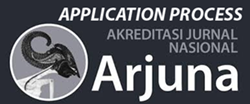Presidential Candidate and Term of Office and Vice President in Indonesia
DOI:
https://doi.org/10.59653/pancasila.v3i02.1477Keywords:
Term of Office, Limitations, President and Vice PresidentAbstract
Article 7 of the 1945 Constitution of the Republic of Indonesia still has weaknesses. Its formulation can still be interpreted differently from the original intent , which emphasized the term limits of the president and vice president. The formulation of Article 7 of the 1945 Constitution of the Republic of Indonesia reads "The President and Vice President hold a term of office for five years, and can be re-elected to the same office, only for one term". In the future, so that it is not interpreted differently, the formulation of Article 7 of the 1945 Constitution of the Republic of Indonesia should read "The President and Vice President hold a term of office for five years, and can be re-elected for only one term".
Downloads
References
Abrillioga, A., Nugraha, A., H. F, A., & Oktafiansyah, H. (2022). Strategic Issues of the Position of the President 3 Period In the Perspective of State Constitutional Law in the Restriction of Power. Jurnal Sosial Dan Sains, 2(6). https://doi.org/10.59188/jurnalsosains.v2i6.402
Alrasid, H. (1999). Pengisian jabatan presiden. Jakarta: Pustaka Utama Grafiti.
Arliman, L. S. (2016). Kedudukan Ketetapan MPR dalam hierarki peraturan perundang-undangan di Indonesia. Lex Jurnalica, 13(3).
Fidyansyah, T., & Rohmah, S. N. (2021). Kriteria Calon Pemimpin Negara dan Mekanisme Pencalonannya di Negara Republik Indonesia dalam Pandangan Fiqih Siyasah. SALAM: Jurnal Sosial Dan Budaya Syar-I, 8(2). https://doi.org/10.15408/sjsbs.v8i2.20254
Ghofar, A. (2009). Perbandingan kekuasaan presiden Indonesia setelah perubahan UUD 1945 dengan delapan negara maju. Jakarta: Kencana Prenada Media Group.
Goffar, J. M. (2012). Demokrasi konstitusional: Praktik ketatanegaraan Indonesia setelah perubahan UUD 1945. Jakarta: Konstitusi Pers.
Gusman, D., & Syofyan, Y. (2023). Pembatasan masa jabatan presiden dalam rangka mewujudkan negara hukum demokratis. Jurnal Legislasi Indonesia, 20(3), September.
Iriani, D., Fauzan, M., & Ningrum, E. (2023). Constitutional Court Judges’ Interpretation Regarding the Limitation on the Presidential and Vice-Presidential Term of Office. Jurnal Jurisprudence, 13(1). https://doi.org/10.23917/jurisprudence.v13i1.1835
Haryono, D. (2014). Aspek hukum pemilihan umum presiden dan wakil presiden. Makalah.
Indarja. (2018). Perkembangan pemilihan presiden dan wakil presiden di Indonesia. Jurnal Masalah-Masalah Hukum, 47(1), Januari.
Kartini, D. S. (2017). Demokrasi dan pengawasan pemilu. Journal of Governance, 2(2).
Latif, A. (2009). Pilpres dalam perspektif koalisi multi partai. Jurnal Konstitusi, 6(3), April.
Liando, D. M. (2016). Pemilu dan partisipasi politik masyarakat (Studi pada pemilihan anggota legislatif dan pemilihan presiden dan wakil presiden di Kabupaten Minahasa Tahun 2014). Jurnal LPPM Bidang EkoSosBudKum, 3(2).
Manan, B. (1999). Lembaga kepresidenan. Yogyakarta: Pusat Studi Hukum FH UII dengan Gama Media.
Maychellina, M., Sabina, V., & Wibisono, R. B. (2023). President Elections Mechanism: Comparative Studies from Indonesia, Russia, and Türkiye. Mimbar Keadilan, 16(2). https://doi.org/10.30996/mk.v16i2.8767
Marzuki. (2007). Pengaruh sistem pemilihan umum terhadap keterwakilan politik masyarakat pada DPRD-DPRD di Propinsi Sumatera Utara. Medan: Disertasi pada Program Doktor Ilmu Hukum Sekolah Pascasarjana Universitas Sumatera Utara.Pratiwi, J. I.,
Muabezi, Z. A. (2017). Negara berdasarkan hukum (Rechtsstaats) bukan kekuasaan (Machtsstaat). Jurnal Hukum dan Peradilan, 6(3).
Muhammad Ali Farhan. (2022). Application of Presidential Threshold In Indonesia And Comparison With Several Countries. YURISDIKSI : Jurnal Wacana Hukum Dan Sains, 18(1). https://doi.org/10.55173/yurisdiksi.v18i1.124
Ramadhan, N. G., Wibowo, M., Mohd Rosely, N. F. L., & Quix, C. (2022). Opinion mining indonesian presidential election on twitter data based on decision tree method. JURNAL INFOTEL, 14(4). https://doi.org/10.20895/infotel.v14i4.832
Rauta, U. (2014). Menggagas pemilihan presiden yang demokratis dan aspiratif. Jurnal Konstitusi, 11(3), September.
Salama, N., & Ulfah, S. (2021). Pembatasan masa jabatan presiden di Indonesia. Jurnal Rechten: Riset Hukum dan Hak Asasi Manusia, 3(1).
Saraswati, R. (2012). Desain sistem pemerintahan presidensial yang efektif. Jurnal Masalah-Masalah Hukum, 41, Januari.
Sholehudin, M. (2022). Understanding Legal Research: 1.
Sukimin. (2020). Pemilihan presiden dan wakil presiden berdasarkan Undang-Undang Republik Indonesia Nomor 7 Tahun 2017 tentang pemilihan umum. Jurnal USM Law Review, 3(1).
Sumono. (2014). Pemilihan presiden dan wakil presiden berdasarkan sistem presidensil. Seminar Nasional dan Call for Papers Uniba.
Vicki Dwi Purnomo, Suryawan Raharjo, & Aida Dewi. (2023). It is necessary to limit the term of office of the House of Representatives to prevent abuse of authority in Indonesia. Formosa Journal of Applied Sciences, 2(3). https://doi.org/10.55927/fjas.v2i3.3588
Downloads
Published
How to Cite
Issue
Section
Categories
License
Copyright (c) 2025 Miftahus Sholehudin, Imam Sukadi

This work is licensed under a Creative Commons Attribution-ShareAlike 4.0 International License.
Authors who publish with this journal agree to the following terms:
- Authors retain copyright and grant the journal right of first publication with the work simultaneously licensed under a Creative Commons Attribution-ShareAlike that allows others to share the work with an acknowledgement of the work's authorship and initial publication in this journal.
- Authors are able to enter into separate, additional contractual arrangements for the non-exclusive distribution of the journal's published version of the work (e.g., post it to an institutional repository or publish it in a book), with an acknowledgement of its initial publication in this journal.
- Authors are permitted and encouraged to post their work online (e.g., in institutional repositories or on their website) prior to and during the submission process, as it can lead to productive exchanges, as well as earlier and greater citation of published work (See The Effect of Open Access).
























